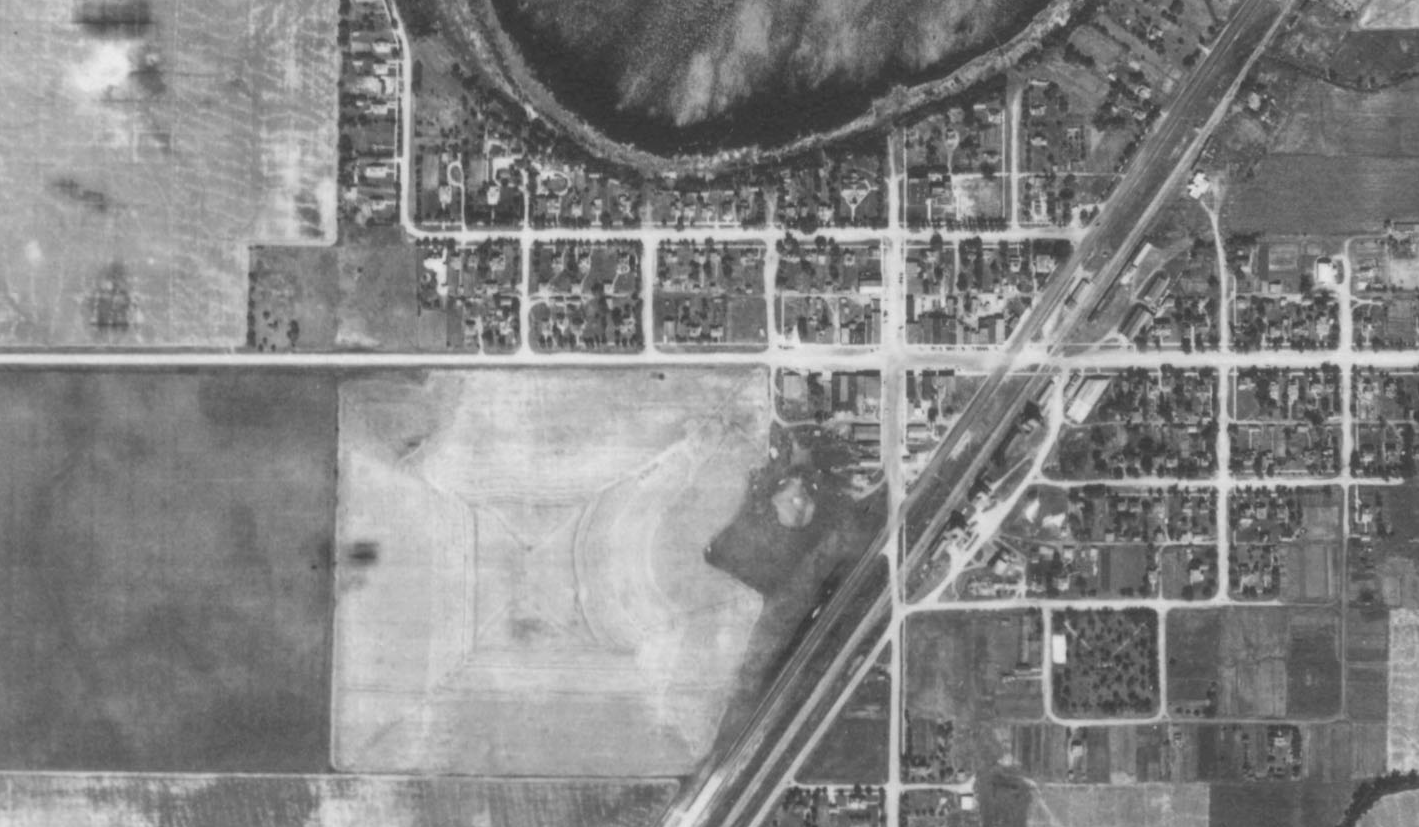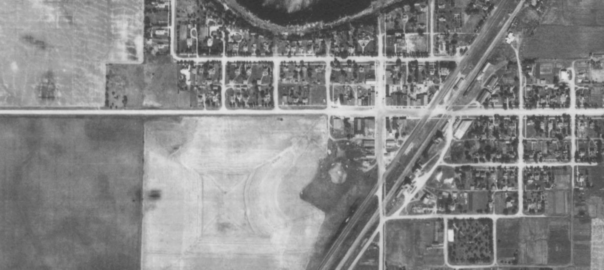For better or worse, Lyon County in southwestern Minnesota is a hotbed of lost golf courses. Six that I know of dot the landscape — two in Marshall, plus one each in or near Tracy, Minneota, Russell and Cottonwood.
More on the latter two:
RUSSELL
Pine Valley West?
Pine Valley Golf Club, established in 1918 in Camden County, N.J., and designed by noted masochist George Crump (in the interest of hyperbole, I made up the masochist part), is notoriously one of the most difficult golf courses in the world. Its sand-strewn routing places it No. 2 on Golf Digest’s list of America’s 100 most difficult courses, and No. 1 on its list of best courses (period) in the United States.
Thirteen years after Pine Valley opened to the public, Russell Golf Club — who knows whether its founders had ever heard of George Crump? — took a run at Pine Valley, if an entry in the local newspaper was any indication.
Russell Golf Club opened for play in the fall of 1931 in or near the southwestern Lyon County city of Russell. On September 4, 1931, the Russell Anchor reported, “We are confident that anyone playing this course will agree that it has more natural hazards than any course its size in the country.” (Yes, that final word read country, not county.)
Which led to the corollary:
“The course is becoming well populated with lost golf balls,” the Anchor further reported.
Which led to the sub-corollary, published by the Anchor on May 12, 1932:
“The golf course has purchased a golf ball marker which is at the H.H. Purdy store. All balls with names on should be turned in to H.H. Purdy.”
The mental picture of dozens of golf balls lying in a heap at H.H. Purdy’s elevator business, waiting to be claimed by the unfortunate souls who duck-hooked them into hazards, hardly engenders a notion that golf was player-friendly when it arrived in Russell. But there were proponents of Russell Golf Club’s creation.
“Local Golf Course Praised,” read a headline in the Russell Anchor of May 19, 1932.
” ‘Russell has one of the best golf courses in the county,’ says a Balaton newspaper man,” the story read, referencing the city immediately to Russell’s southeast. “Several other articles have appeared in the Lyon County papers in the past week or two.”
The story further reported that sand and oil was being mixed for the new course’s greens. A story from the previous autumn said Russell Golf Club would have nine holes and “thirty foot greens.”
The members of Russell Golf Club did endure the abundant hazards for at least three seasons. On. July 26, 1934, the Anchor reported, “The soft ball game has got so hot around here that the Scottish game has suffered, but the course is in fine condition and waiting for some one to tie last years (sic) low scores of 34 and 25.” I’m not sure what the reference to 25 was; perhaps it was a low-net score.
I jumped ahead to 1939 issues of the Anchor to see if Russell Golf Club might have survived until the advent of U.S. involvement in World War II, which resulted in the abandonment of many Minnesota golf courses, but I did not find any mentions of the golf course from that year.
COTTONWOOD
Twenty-four miles northeast of Russell, and literally on a direct line through the site of Marshall Golf Club’s lost course of the 1920s and ’30s, lay Cottonwood Golf Club.
The Minneapolis Tribune of April 1, 1928, provided the tip-off that Cottonwood, in the northeastern corner of Lyon County, had a golf course that preceded the current Cottonwood Country Club, established in 1955 not far from Cottonwood Lake.
“The Cottonwood Golf club has taken a 10-year lease on a 40-acre tract of land just west of the city,” the Tribune reported. “A golf course will be laid out and it is also proposed to establish a children’s play ground on the tract.”
On June 1, 1928, the Cottonwood Current reported on a baseball game that was played at the “new Golf course ball diamond.” (The Cottonwood All-Stars beat the town’s high school team 10-8.)
A newspaper entry the next month made it clear the golf course was in use. “The Cottonwood golf course, after weeks of preparation, has been sufficiently completed to permit playing,” the Current reported. “Some of the local players have become quite proficient having had considerable practice on courses in neighboring towns.”
Cottonwood was not unlike other small southwestern Minnesota towns of the era. But dissimilarly, Cottonwood’s course opened near the end of a period of significant loss of population in the city. Cottonwood’s population in 1930 was 615, a 24 percent decline from the population of 813 in 1920. By 1940, the population had risen again, to 690.
I can’t say with certainty, but a 1938 aerial photo of Cottonwood appears to reveal the site of the Cottonwood course. A square plot of land south of Main Street and west of West 1st Street shows what appears to be a dogleg shape of one hole, plus possible paths of a couple of more holes. The Cottonwood Fire Department is today situated squarely on that property.

Latest posts by Joe Bissen (see all)
- Wells Golf Club: Lost courses No. 247 and 248 - April 24, 2024
- Island courses: Photo gallery - February 24, 2024
- Island outposts: Coney Isle and Circle Lake - February 24, 2024
